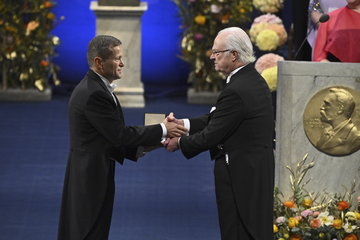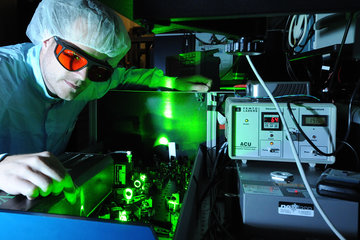Friedrich Bonhoeffer receives 2020 Gruber Neuroscience Prize
Award honors groundbreaking work on mechanisms that underlie the formation of neural circuits

Friedrich Bonhoeffer developed ingenious and novel in-vitro assays which enabled him to elucidate the molecular mechanisms that are responsible for the establishment of an orderly connection from the eye to the optic tectum, one of the main visual structures in the brain. This orderly connection is executed by the axons of nerve cells and he demonstrated that the formation of the proper connections is driven not only by attractive but – somewhat unexpectedly – also repellent molecular signals. These discoveries were game-changing as they provided clear experimental evidence for a molecular control of the development of topographic maps as it had been proposed by Roger Sperry in the 1960s.
Corey Goodman’s pioneering work identified families of signals, their receptors, and growth regulators important for axonal pathfinding. Marc Tessier-Lavigne broke further ground in discovering additional mechanisms of axon guidance and demonstrating how all these mechanisms work together.
Joshua Sanes, member of the selection committee, summarizes “Taken together, the work of these three scientists comprises one of the greatest success stories in developmental neuroscience.”
Friedrich Bonhoeffer studied physics and received his doctorate in nuclear physics in Göttingen, Germany, in 1958. At the University of California, Berkeley, he worked as a post-doctoral researcher and dealt with the physical chemistry of macromolecules. From 1961 he worked at the former Max Planck Institute for Virus Research in Tübingen and was group leader at the Friedrich Miescher Laboratory in Tübingen. In 1972, he became director of the Department of Physical Biology at the Max Planck Institute for Virus Research (later Developmental Biology) in Tübingen.
In 2007 Friedrich Bonhoeffer received the Ralph W. Gerard Prize and in 1996 the Ipsen Neuronal Plasticity Prize (together with Goodman and Tessier-Lavigne). He has been a member of the German National Academy of Sciences, Leopoldina, since 1994.
The Gruber International Prize Program honors individuals in the fields of Cosmology, Genetics and Neuroscience, whose groundbreaking work provides new models that inspire and enable fundamental shifts in knowledge and culture. The Selection Advisory Boards choose individuals whose contributions in their respective fields advance our knowledge and potentially have a profound impact on our lives.
The Gruber Foundation was established in 1993 by the late Peter Gruber and his wife Patricia Gruber. The Foundation began its International Prize Program in 2000, with the inaugural Cosmology Prize. The Prize recipients are chosen by the Neuroscience Selection Advisory Board.












